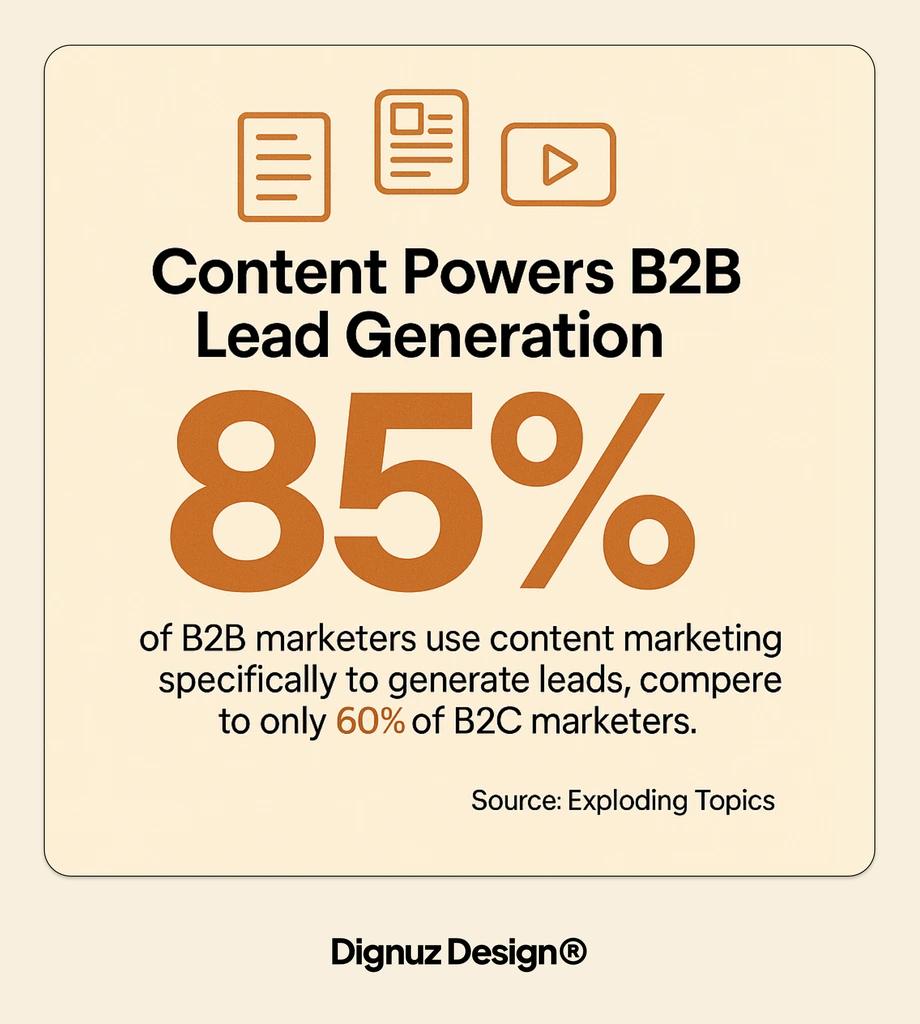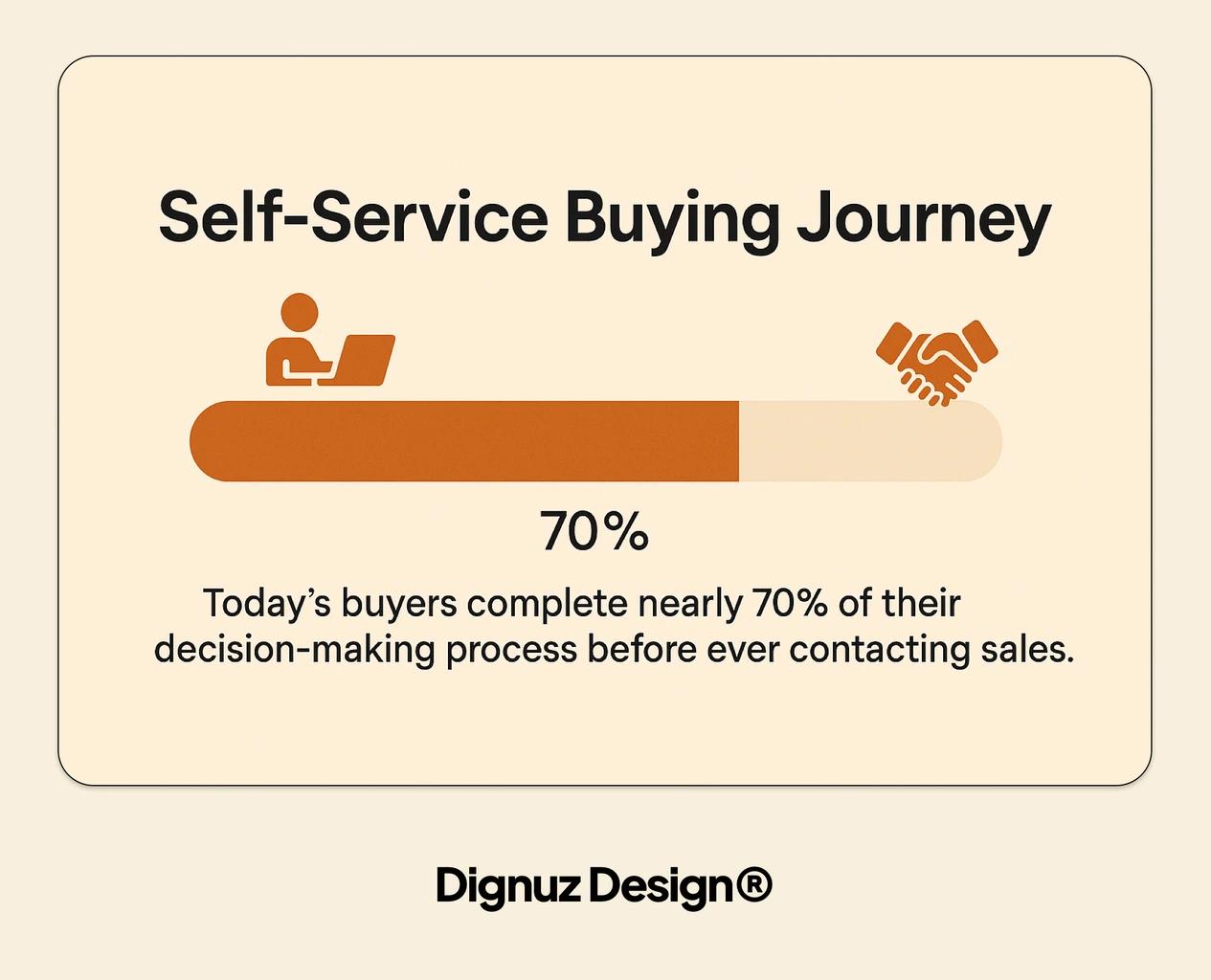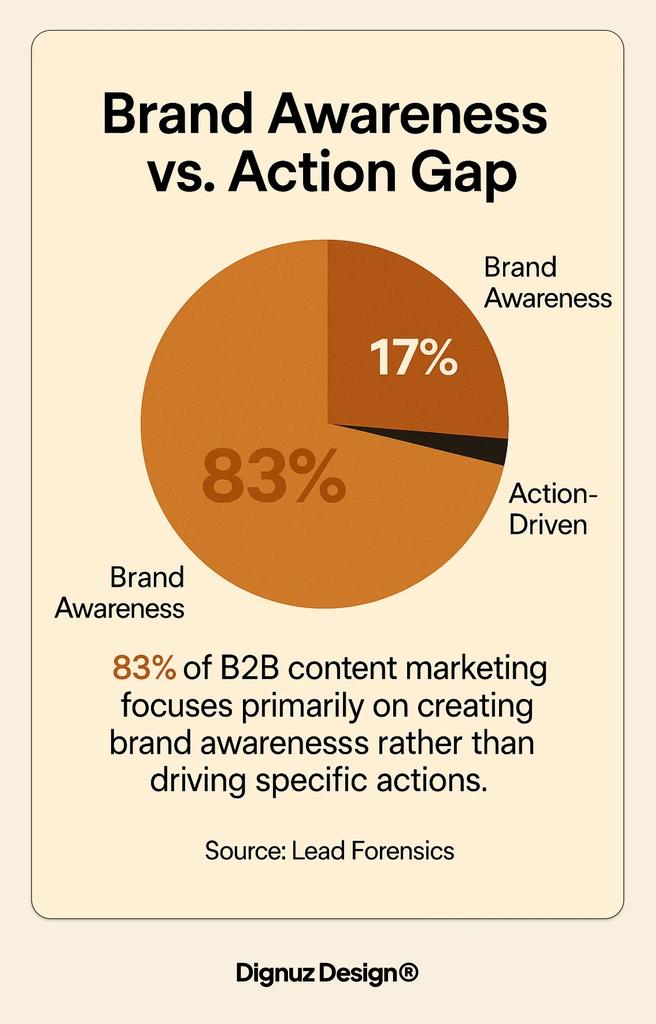How to Optimize Your B2B Website for Lead Generation: Best Practices and Tips

For B2B companies, website-generated leads are vital to business growth. A well-optimized website doesn't just represent your brand—it actively works to convert visitors into qualified leads.
Many B2B websites struggle to generate quality leads despite getting decent traffic. The disconnect often lies in site structure, content quality, and how effectively visitors are guided toward conversion.
In this guide, we'll explore proven strategies to transform your B2B website into a lead generation powerhouse. From essential design elements to content strategy and technical optimization, you'll discover actionable tips to boost both lead quality and quantity.
Understanding B2B Lead Generation Fundamentals
B2B lead generation is the process of identifying and attracting potential business customers to your product or service. Unlike B2C marketing, B2B typically involves longer sales cycles, multiple decision-makers, and higher-value transactions.
Your website serves as the central hub of your digital lead generation efforts. It's often the first meaningful interaction potential clients have with your business. This makes it crucial for moving prospects through your sales funnel—from awareness to consideration to decision.
Research shows that 85% of B2B marketers use content marketing specifically to generate leads, compared to only 60% of B2C marketers. (Source: Exploding Topics) This highlights the critical role content plays in B2B lead generation.
The B2B buyer's journey has evolved significantly. Today's buyers complete nearly 70% of their decision-making process before ever contacting sales. This makes your website's ability to engage, educate, and convert visitors more important than ever.

B2B Lead Generation Stage: Awareness
- Website Role: Educate visitors about problems and solutions
- Key Elements: Blog posts, guides, infographics
B2B Lead Generation Stage: Consideration
- Website Role: Present your solution as the ideal option
- Key Elements: Case studies, product comparisons, webinars
B2B Lead Generation Stage: Decision
- Website Role: Convert interest into action
- Key Elements: Demos, free trials, consultation offers
B2B Lead Generation Stage: Retention
- Website Role: Support existing customers
- Key Elements: Resources, knowledge base, customer portals
Understanding these fundamentals provides the foundation for all the optimization strategies we'll explore next.

Essential Website Elements for B2B Lead Generation
Certain website elements are particularly effective at converting visitors into leads. Let's examine the most important components to optimize:
Clear Value Proposition
Your value proposition must immediately communicate what your business offers and why potential clients should choose you over competitors. It forms the foundation of your lead generation efforts.
An effective value proposition is prominently displayed above the fold. It stays clear and concise—avoiding jargon that might confuse visitors. The best value propositions focus directly on solving customer problems.
A strong value proposition answers the visitor's critical question: "What's in it for me?" When crafted effectively, it significantly increases engagement and conversion rates on your site.
Strategic Call-to-Actions
Call-to-Action (CTA) buttons are the signposts that guide visitors toward becoming leads. They convert passive browsers into active prospects when strategically implemented.
Data analysis reveals that 83% of B2B content marketing focuses primarily on creating brand awareness rather than driving specific actions. (Source: Lead Forensics) This represents a missed opportunity for lead generation, highlighting the importance of action-oriented content and strategic CTAs.
Effective CTAs use action-oriented language and stand out visually from the rest of the page. They create a sense of urgency or value that compels action. Place them strategically throughout your site at points where visitors are most likely to convert.
Lead Capture Forms
Forms are where visitor interest converts into actual leads. They represent the critical transition point in the lead generation process.
- Form length: Keep forms as short as possible—only ask for essential information
- Mobile optimization: Ensure forms work perfectly on all devices
- Value exchange: Clearly communicate what visitors get in return for their information
- Field reduction: Eliminate unnecessary fields that create friction
- Visual design: Make forms visually appealing and easy to complete
The number of form fields directly impacts conversion rates. Consider using progressive profiling—collecting information gradually over multiple interactions rather than all at once.

Content Strategy for Lead Generation
Content is the fuel that powers your lead generation engine. A thoughtful content strategy can attract, engage, and convert your ideal prospects.
Creating Valuable Content
Value-driven content positions your business as a trusted authority while addressing your prospects' needs and challenges. It builds the foundation for successful lead generation.
When creating content, focus on solving specific industry problems your audience faces. Provide actionable insights and clear takeaways they can implement immediately. Back your claims with data and research to build credibility.
Research reveals that 54% of B2B decision-makers value early-stage educational content when researching business solutions. (Source: Exploding Topics) This underscores the importance of creating content that helps prospects in the initial phases of their buying journey.
Content Types that Convert
Different content formats work at various stages of the buyer's journey. Some types excel at generating initial interest, while others drive conversion at later stages.
Blog posts:
- Lead Generation Effectiveness: Medium-High
- Best For: Top-of-funnel awareness
White-papers/Ebooks
- Lead Generation Effectiveness: Very High
- Best For: Mid-funnel consideration
Case Studies
- Lead Generation Effectiveness: High
- Best For: Bottom-funnel decision
Webinars
- Lead Generation Effectiveness: Very High
- Best For: Mid to bottom-funnel
Interactive Tools
- Lead Generation Effectiveness: Extremely High
- Best For: All funnel stages
Data shows that among top-performing B2B content types, podcasts (77%), blogs (76%), and video (59%) are the most widely used formats for engaging potential clients. (Source: Exploding Topics)

Content Distribution and Promotion
Creating great content is only half the battle—you also need to get it in front of your target audience. Distribution amplifies your content's lead generation potential.
Share content across relevant social media channels where your B2B audience spends time. Utilize email marketing to distribute content to your existing subscriber base. Consider paid promotion for high-value content pieces to expand reach.
A well-executed distribution strategy ensures your content reaches the right audience at the right time. This maximizes its lead generation potential and improves return on your content investment.
Technical Optimization for Lead Generation
Technical factors significantly impact your website's ability to generate leads. Even the most compelling content won't convert if your site performs poorly.
Website Speed and Performance
Site speed directly affects user experience and conversion rates. Visitors are more likely to abandon slow-loading sites before completing lead generation forms.
Load Time: 1-3 seconds
- Approximate Bounce Rate Increase: 32%
Load Time: 3-5 seconds
- Approximate Bounce Rate Increase: 90%
Load Time: 5-10 seconds
- Approximate Bounce Rate Increase: 123%
Load Time: 10+ seconds
- Approximate Bounce Rate Increase: 200%+
To improve site speed, optimize image sizes and formats for web use. Enable browser caching to improve return visits. Minimize HTTP requests by consolidating files where possible. Consider using Webflow for its built-in performance optimization that helps maintain fast load times.
Mobile Optimization
With increasing mobile traffic, ensuring your site functions flawlessly on all devices is crucial for lead generation success. Mobile optimization directly impacts conversion rates.
Implement responsive design that adapts to all screen sizes automatically. Test your forms on multiple devices to ensure they work properly. Ensure touch targets are large enough for easy interaction on small screens.
Simplify navigation for mobile users to help them find what they need quickly. Test load times on various connection speeds to ensure mobile users have a good experience regardless of their network.
SEO Best Practices
SEO brings qualified traffic to your site, creating more opportunities to generate leads. Without proper optimization, your lead generation potential is limited by poor visibility.
Conduct keyword research focusing on search intent rather than just volume. Optimize on-page elements including titles, meta descriptions, and headers for both users and search engines. Create content that directly addresses search queries your potential clients are making.
Build quality backlinks from relevant industry sources to improve authority. Ensure technical SEO fundamentals like site structure, XML sitemaps, and schema markup are properly implemented.

Conversion Rate Optimization Techniques
Conversion Rate Optimization (CRO) is the systematic process of increasing the percentage of website visitors who take desired actions on your site. It's about making your existing traffic work harder.
A/B testing involves comparing two versions of a webpage to see which performs better. This data-driven approach removes guesswork from optimization decisions.
Element to Test: Headline variations
- Potential Impact on Conversion: 10-50% improvement
Element to Test: CTA button color/text
- Potential Impact on Conversion: 20-95% improvement
Element to Test: Form length
- Potential Impact on Conversion: 10-120% improvement
Element to Test: Page layout
- Potential Impact on Conversion: 5-75% improvement
Element to Test: Social proof elements
- Potential Impact on Conversion: 15-40% improvement
When implementing A/B tests, test one element at a time to isolate what's working. Run tests long enough to achieve statistical significance before making decisions. Document your findings for future optimization efforts.
Landing pages focused on specific offers convert better than general pages. Create dedicated landing pages for each campaign or offer to maximize relevance. Remove navigation to minimize distractions that could lead visitors away from converting.
Have you wondered why Webflow is an excellent choice for creating high-converting landing pages? Its visual design capabilities combined with powerful CMS features make it ideal for testing and optimizing lead generation pages.
User experience directly impacts conversion rates. Create clear visual hierarchies that guide attention to important elements. Ensure intuitive navigation that helps visitors find what they need. Implement trust signals such as security badges and testimonials throughout the conversion process.
Analytics and Measurement
Without proper tracking, you can't determine what's working or where improvements are needed. Analytics provide the insights needed to refine your lead generation strategy.
Monitor these essential metrics to gauge your lead generation effectiveness:
- Conversion Rate: The percentage of visitors who become leads
- Cost Per Lead (CPL): How much you're investing to acquire each lead
- Lead Quality Score: How well leads align with your ideal customer profile
- Time to Conversion: How long it takes visitors to convert to leads
- Source Attribution: Which channels are generating your best leads
Implement these tools to accurately measure lead generation: Google Analytics for visitor behavior tracking, goal tracking for conversion actions, and UTM parameters for campaign tracking. Heat mapping tools help analyze user engagement patterns, while form analytics identify drop-off points in your conversion process.
With proper tracking in place, powerful Webflow integrations can automate 46% of your marketing workflow, significantly improving efficiency and lead management capabilities.
Data-driven optimization is an ongoing process. Review analytics reports regularly to spot trends. Identify underperforming pages and elements that need improvement. Recognize patterns in successful conversions to replicate what works.
Real-World B2B Lead Generation Success Patterns
While every business is unique, certain patterns emerge across successful B2B lead generation websites. These proven approaches can guide your optimization efforts.
Simplified navigation helps visitors focus on conversion paths. When websites reduce options and clarify user journeys, conversion rates typically improve. This focused approach prevents the paradox of choice that often leads to abandonment.
Value-based CTAs outperform action-based ones. Buttons that emphasize what users gain ("Get Your Free Guide") convert better than those focused on what users must do ("Submit"). This benefit-oriented approach addresses the visitor's primary question: "What's in it for me?"
In our experience at Dignuz Design, we've observed that understanding the detailed capabilities and limitations of your web platform is crucial for implementing effective lead generation strategies. This knowledge allows you to maximize platform strengths while finding creative solutions for any constraints.
Here's a comprehensive B2B website lead generation audit table to help you assess your current site:
Homepage Value Proposition
- Lead Generation Impact: Very High
- Quick Assessment Question: Does it clearly communicate unique value in 5 seconds?
Contact Forms
- Lead Generation Impact: Extremely High
- Quick Assessment Question: Are they shorter than 5 fields?
CTAs
- Lead Generation Impact: Very High
- Quick Assessment Question: Are they benefit-focused and visually prominent?
Mobile Experience
- Lead Generation Impact: High
- Quick Assessment Question: Does the site convert equally well on mobile?
Page Load Speed
- Lead Generation Impact: High
- Quick Assessment Question: Does each page load in under 3 seconds?
Content Relevance
- Lead Generation Impact: Very High
- Quick Assessment Question: Does content directly address customer pain points?
Trust Signals
- Lead Generation Impact: High
- Quick Assessment Question: Are testimonials and credentials prominently displayed?
Lead Magnets
- Lead Generation Impact: Very High
- Quick Assessment Question: Are high-value resources offered in exchange for contact info?
Conclusion
Optimizing your B2B website for lead generation is not a one-time task but an ongoing process of testing, measuring, and refining. By implementing the strategies outlined in this guide—from clear value propositions to technical optimization and data-driven decision-making—you can transform your website into a powerful lead generation tool.
Remember that effective lead generation balances user experience with business objectives. Your website should provide genuine value to visitors while guiding them naturally toward conversion actions.
Start by assessing your current website against the elements discussed here. Identify your biggest opportunities for improvement, implement changes strategically, and continuously measure results. Over time, these optimizations will compound, resulting in a steady increase in both lead quantity and quality.
Ready to transform your B2B website into a lead generation powerhouse? Contact our team at Dignuz Design to discuss how we can help optimize your web presence for maximum lead generation performance.



